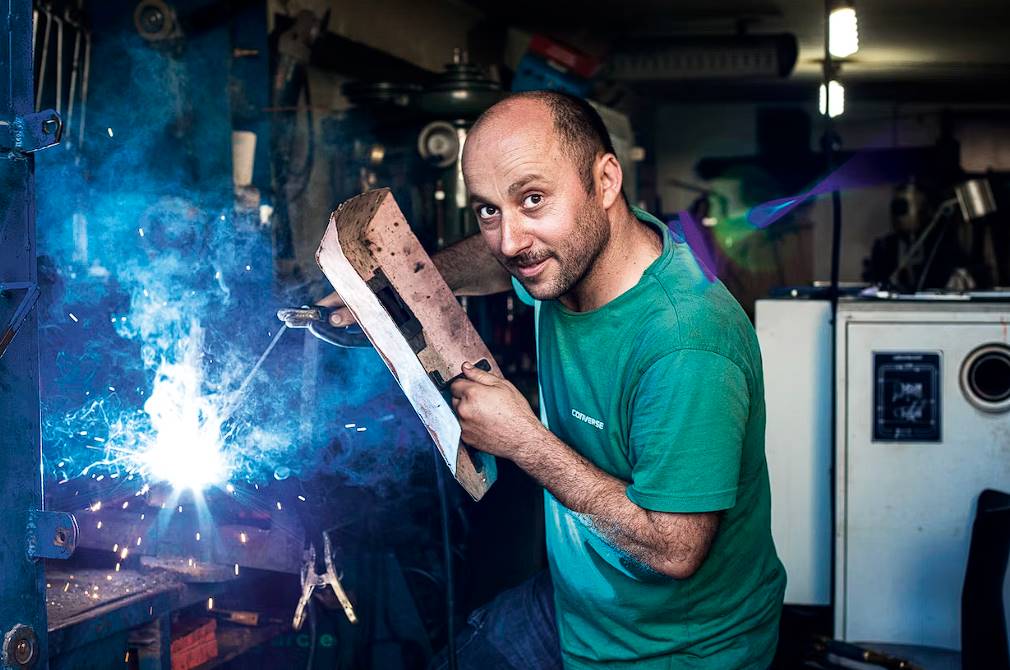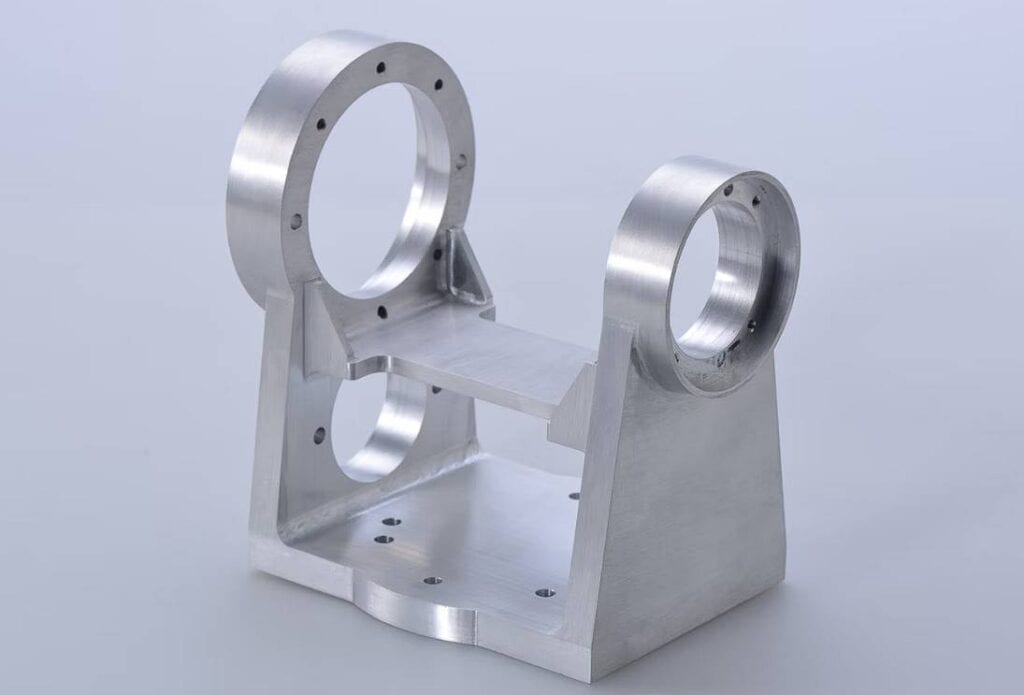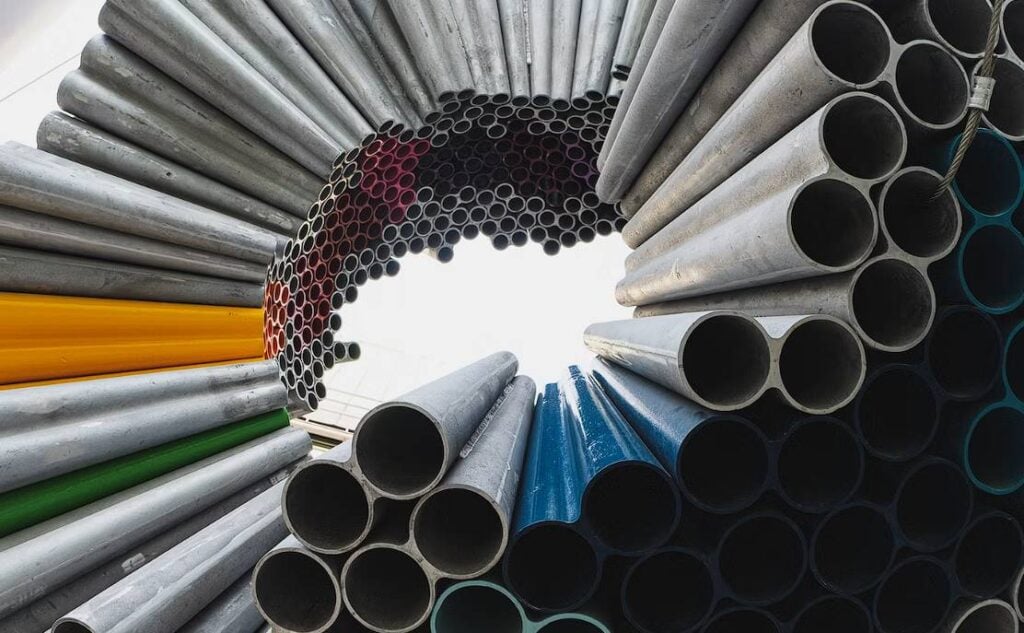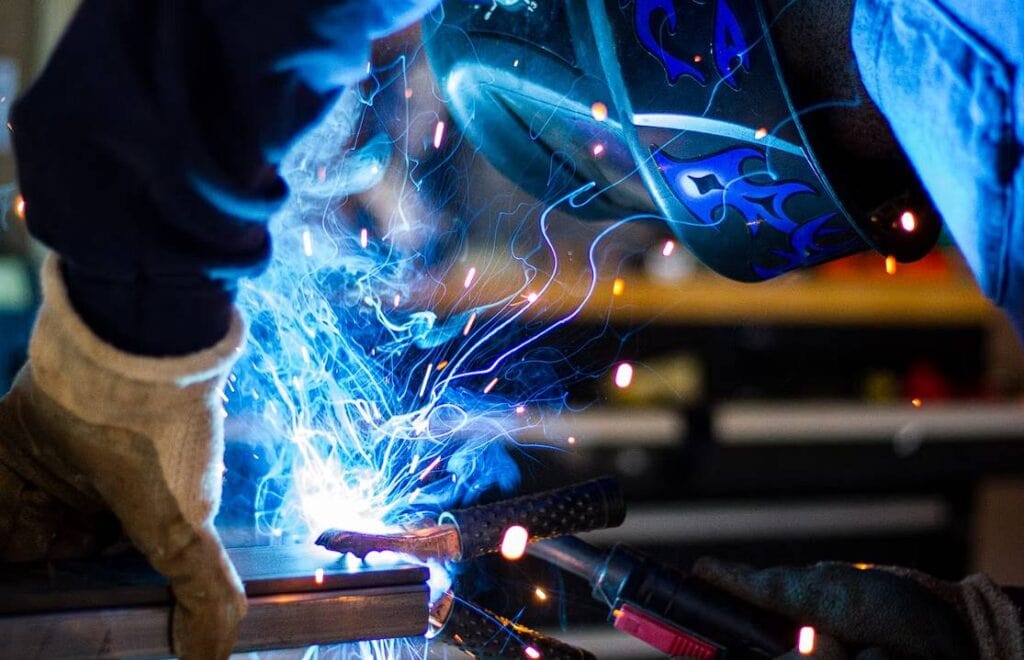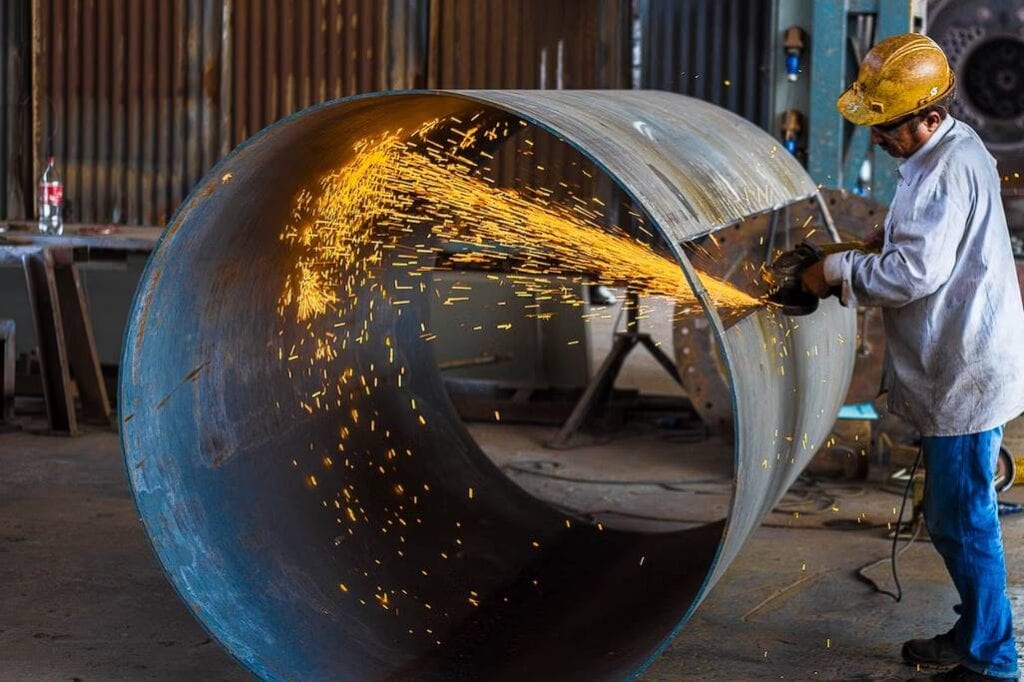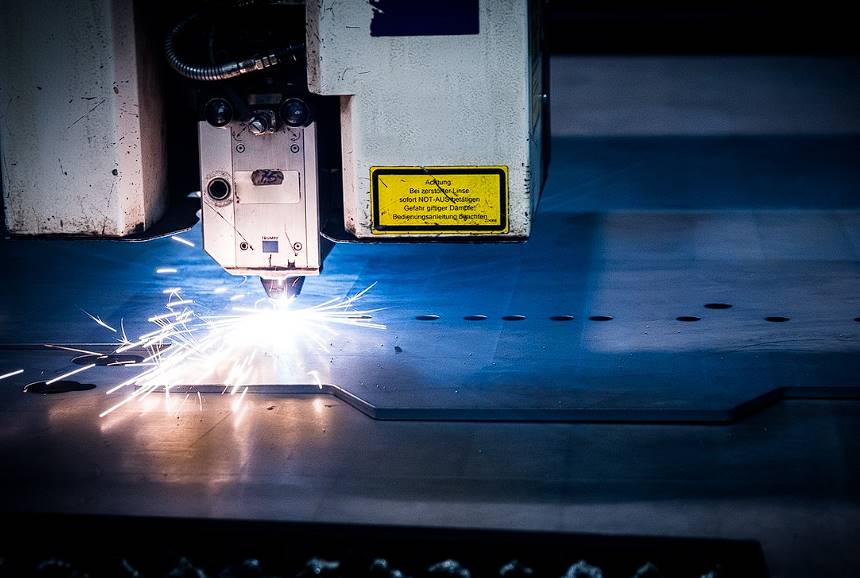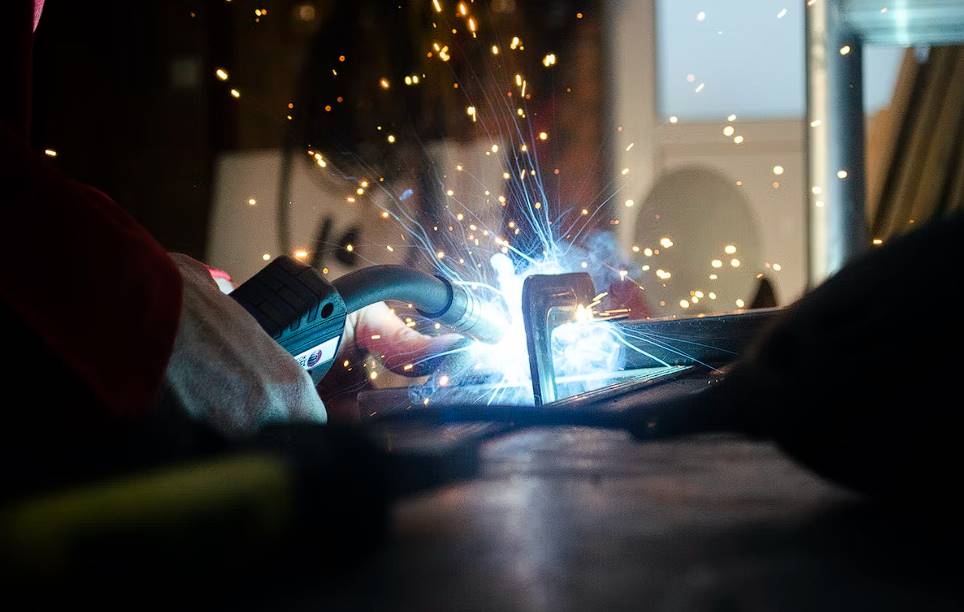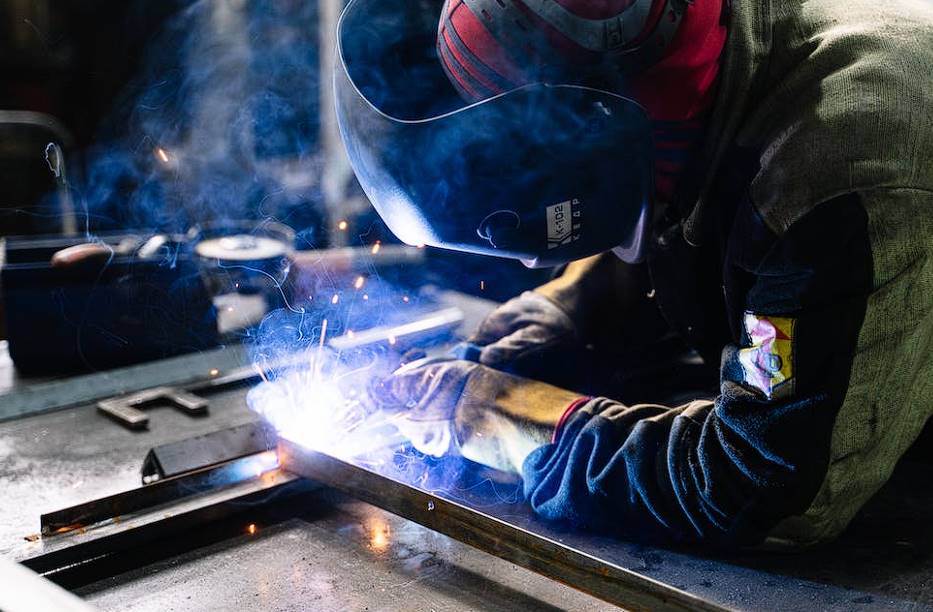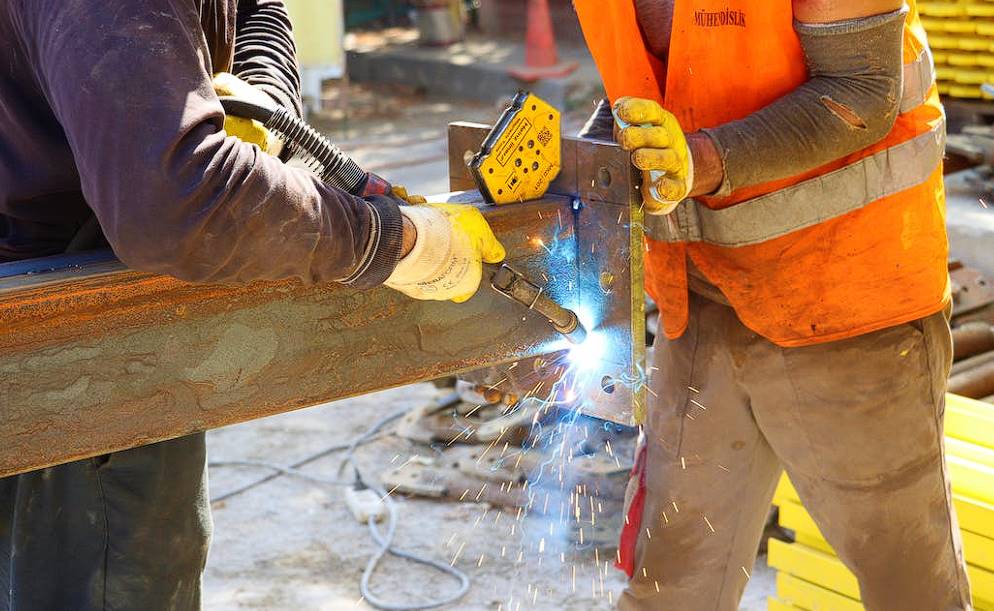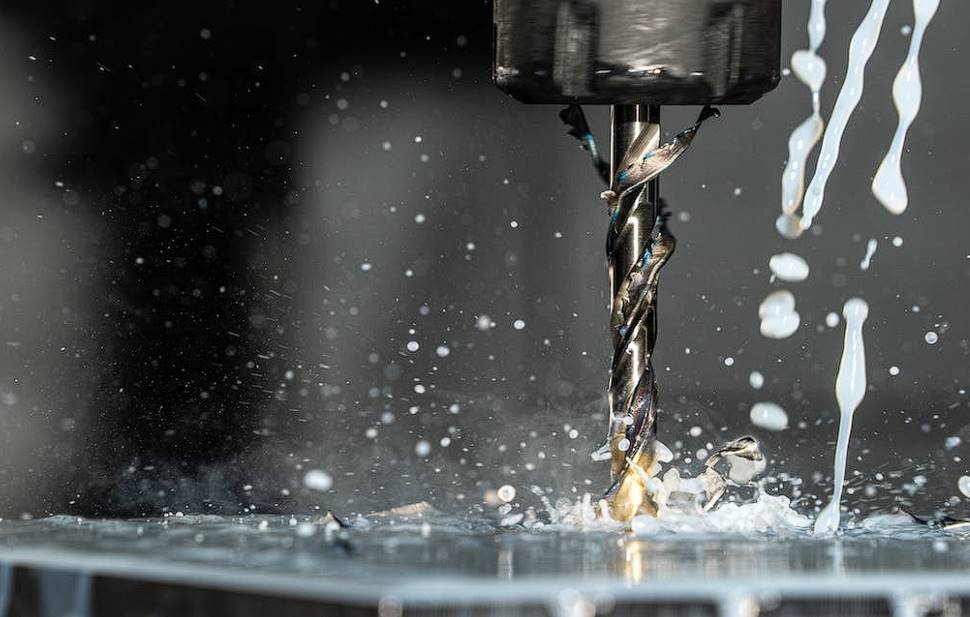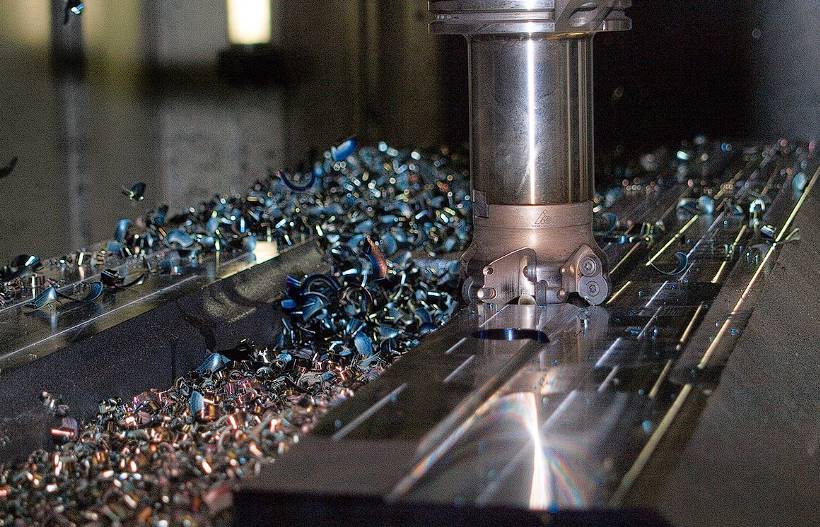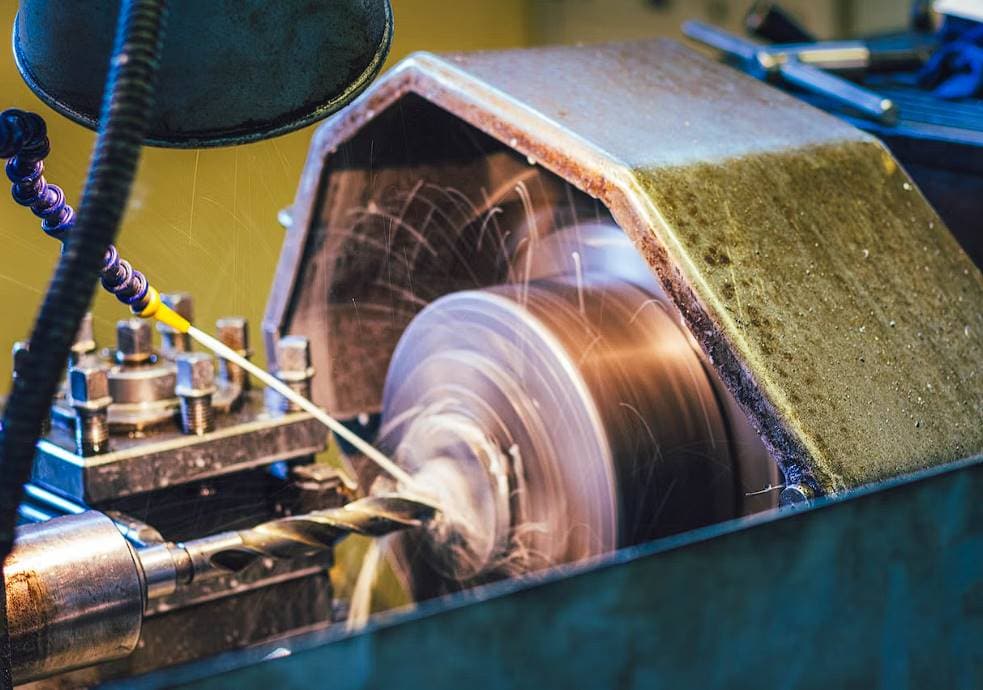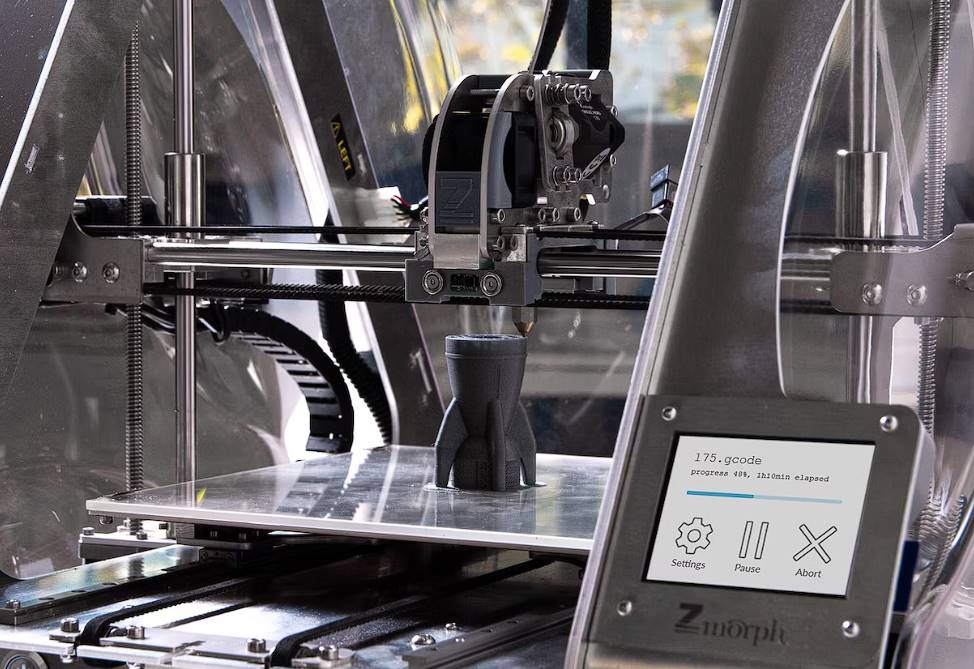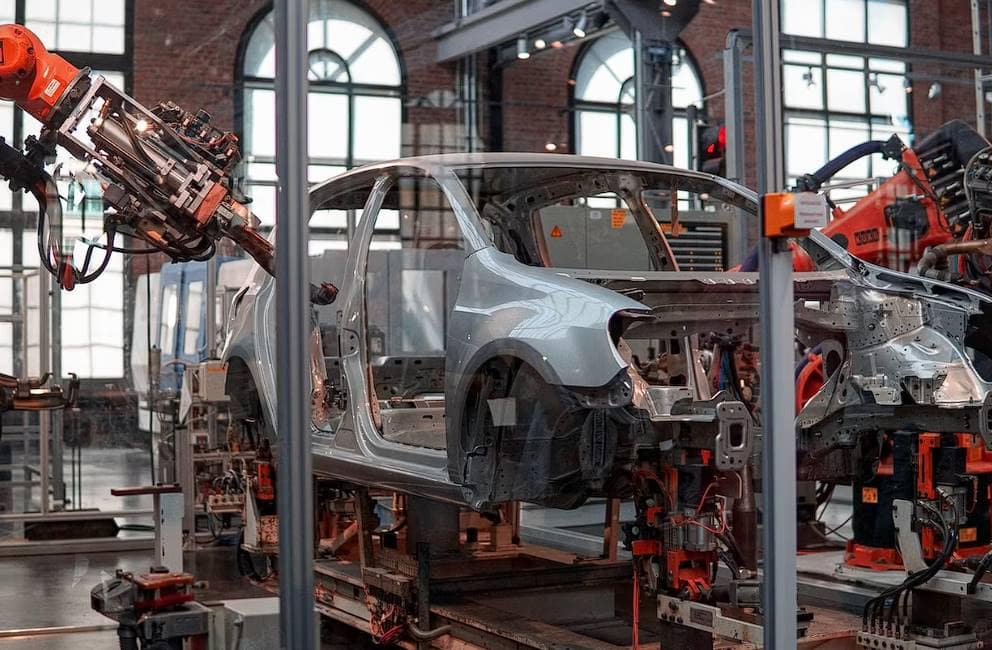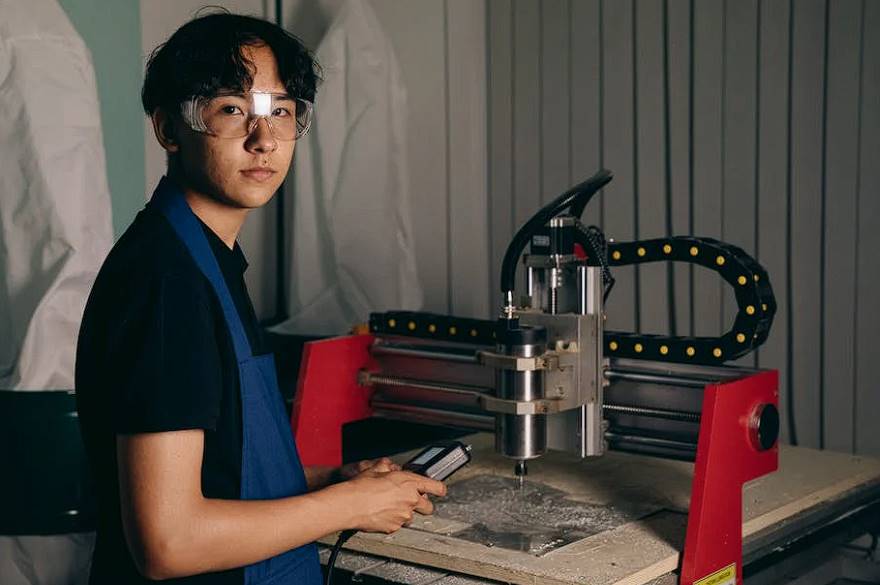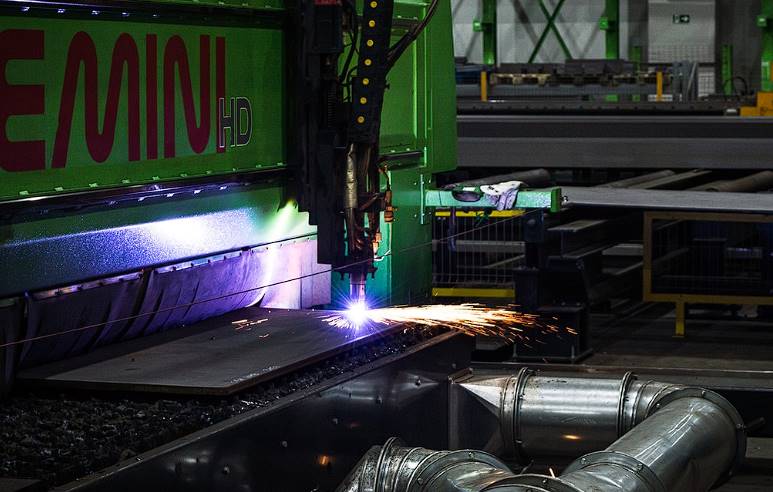Fabrication of metal is an important process that entails cutting, shaping, and assembling different metal components to produce the end product. It plays an important role in a wide range of businesses, including the construction, automotive, and aerospace industries, as well as manufacturing. Fabricating metal requires high expertise and precision; however, even the most experienced fabricators are prone to making some of the most common mistakes.
This blog post will address these blunders and offer advice on how to fix them. Let's dive into metal manufacturing and discover how to avoid common mistakes.
Metal Fabrication Mistakes
Fabricating metal into usable parts is a difficult process that requires a wide range of equipment and specialised knowledge. Even the most experienced fabricators can make a huge mistake.

Inappropriate Material Use
Metal fabrication facilities frequently err in one of two ways: using low-cost materials without proper knowledge or understanding or using only the strongest material available. Both of these have the potential to delay the project and undermine its success.
Choosing inexpensive and lightweight materials to cut costs is understandable, but doing so without learning how to work with them properly can have unintended consequences. It might lower productivity and deteriorate the quality of the work done.
But resist the need to always reach for the toughest stuff available. Using a more malleable or lighter material could improve the efficiency and effectiveness of certain procedures. Using a stronger-than-required material would make it more difficult to shape and form. The complexity of the design's shapes and sizes may require you to double your efforts. It would be best if you learned to select better the materials you need for a given task.
Insufficient Design And Planning
One of the biggest mistakes that can be made during metal production is poor preparation and design. Without a thorough plan and clear design criteria, fabricators are more likely to encounter issues as they work. Spending time and energy on meticulous planning and design is essential for avoiding this blunder.
Producing detailed designs, considering the compatibility of materials, and conducting feasibility analyses are all part of this process. It is possible to ensure the project is well-planned and carried out by collaborating with designers and engineers.
Lack Of Communication
A failure to keep in touch with the customer is one of the most common causes of metal production failures. When fabricating products that customers will love, keeping the lines of communication open with them at all times is crucial.
Keeping in touch lets you quickly respond to any questions or comments, ensuring that the final product is exactly what they envisioned. Client dissatisfaction, poor feedback, and time and money lost can result from ineffective communication. You can earn your customers' trust and loyalty through open lines of communication with your clientele, establishing yourself as a go-to metal fabrication service provider.
Making Assumptions
The importance of attention to detail in metal fabrication was previously mentioned. The result will be machine components that can be used in many different fields. The effectiveness of the tools in their designated fields is entirely dependent on the quality of the products themselves. That's why it's crucial to stick to the book when it comes to measurements and specifications.
When it comes to the effectiveness of a finished product, even a minor calculation error can have a significant impact in most cases. Ask the client to double-check any missing measurements rather than assuming anything.
Uninformed Decisions
Fabrication losses due to faulty assumptions can be substantial, especially when producing components for a complex machine. If incorrect dimensions are used, the door won't fit in the car when it's time to assemble it. Such variations may drastically alter the effectiveness of a product.
Therefore, metal fabricators must carefully adhere to the measurements and specifications provided by their clients. Hence, instead of making assumptions, ask the customer for clarification if you have any concerns about the accuracy of their measurements or requirements.
Improper Storage
In metalworking, it's easy to overlook the need to have a place to store raw materials. Some less careful employees could miss some things, costing more money and resulting in a lower quality product. Welding fillers are an excellent case in point for incorrect storage. Iron makes filler metals corrosive because of their porous structure. Rust on the filler material will cause poor welding, so keep them away from moisture when not in use. Binders are an additional expense that would increase the project's overall cost.
Inadequate Safety Measures
When working with metal, safety is priority number one. Basic safety procedures and protective gear can reduce the likelihood of accidents and injuries.
Fabricators must put safety first and implement rigorous procedures, such as providing appropriate personal protective equipment (PPE), holding regular safety training programmes, and performing routine inspections of the work environment. It is essential to promote a culture of safety in the fabrication shop to reduce accidents and make the workplace more secure for all employees. By prioritising safety throughout the process, metal fabricators can keep their employees safe and maintain a spotless track record.
Poor Cutting Techniques
Poor cutting techniques can negatively affect metal fabrication by producing ragged edges, inaccurate cuts, and surplus waste. Fabricators can avoid these complications using cutting strategies and equipment designed for the material. This requires deciding on the best method of cutting (laser, plasma, or waterjet) and using properly calibrated and sharpened cutting instruments.
In addition, the cutting speeds and feed rates specified for the materials at hand must be strictly adhered to if clean and accurate cuts are to be made. Fabricators can maximise productivity and manufacture high-quality metal components by adhering to proper cutting processes and preserving precision.
Incorrect Machine Maintenance
The machinery used in metal fabrication is crucial to the industry's success, so keeping it in good working order is of paramount importance. Failure to perform routine maintenance on equipment can lead to breakdowns, slowed production, and higher repair costs. To prevent these delays, fabricators should create and strictly follow a preventative maintenance plan for all fabrication tools.
Maintenance procedures such as checking the machine frequently, oiling its moving parts, and replacing worn parts when necessary are crucial for keeping the machinery running smoothly and efficiently for as long as possible. In addition to improving the productivity and dependability of the machines used in metal fabrication, a clean work area reduces the risk of debris clogging or otherwise damaging the equipment.
Schedule Problems
When metal fabricators are struggling for work, they may take on too much at once. Scheduling all of the processes involved in metal fabrication is crucial. Think about how long it will take for everything to come together, from the arrival and settling of materials to the completion of each process.
Try to finish a project slowly; doing so can drastically reduce quality. Physical harm and wasted resources are two more negative outcomes of rushing a project. You should also only take on work that you can reasonably complete.
Inappropriate Shaping And Bending
Bending and forming metals requires precision to maintain structural integrity while creating the desired shapes. Fabricators need to know the strengths and weaknesses of the materials they work with so they can bend them correctly.
The correct bending machinery and tools must be used, and strict adherence to lending standards and other considerations, such as the bend radius and material thickness, must be observed. Bending and shaping operations can cause distortions and deformations if they aren't carefully planned and measured.
Unrealistic Designs
There are limitations to each material that must be taken into account while developing items, even though most modern fabrication techniques make complicated fabrications possible. Problems like excess material waste and flimsy construction can result from an unrealistic design.
If you are still determining the viability of your designs, it is recommended that you solicit the feedback of other fabricators or create a prototype.
Some mistakes in metal fabrication can add unnecessary time and money to your project. Make good use of the advice provided above to ensure the success of your projects. Further, if you're going to outsource your fabrication projects, make sure to do so with a reliable fabricator so that you get flawless results.
Incorrect Arc Striking
Welders generate heat for the weld by striking an arc. It bonds to the metal by melting the filler. The metal could be harmed if the arc is heated too much due to incorrect labelling. A lot of resources might be wasted if this happens.
If the welder is careful, it can avoid getting stuck on anything else, such as scrap metal or another metal, if they strike it accidentally. If you pull away too soon, the arc will stick to the weld plate, but if you wait too long, the arc will be extinguished. To avoid this, only hit the arc at the precise stops indicated.
Improper Measuring And Marking
When working with metal, precise measurements and well-defined markings are essential for getting everything lined up just right. Fabricators need to use tools like callipers, rulers, and squares to get accurate dimensions. Markings for cutting, bending, and welding must be clear and legible if the fabrication process is to go smoothly.
To save time and money, it is crucial to double-check all dimensions and marks before manufacturing begins. Double-checking your work can save time and resources in the long run and keep your customers happy. If you want to provide your customers with metal items that live up to their expectations, it's crucial that you stress the necessity of accurate measurements and clear marks.
Poor Training For Employees
A metal fabrication company's success rests on the shoulders of its workers, who must be highly skilled and well-trained. To stay ahead of the competition, investing in the education and growth of one's workforce is essential.
By providing ongoing training, fabricators can keep their staff abreast of the latest fabrication methods, technological developments, and safety protocols. Employees can gain more confidence and competence if encouraged to attend workshops and earn certifications.
Productivity and efficiency increase and customer satisfaction is ensured when workers receive adequate training. Employee happiness and loyalty can be increased by encouraging a culture of constant learning and improvement in the metal fabrication company.
Tips For Avoiding Mistakes In Metal Fabrication
Here are some valuable tips to avoid metal fabrication mistakes:
Emphasise Safety
Protecting workers and preventing accidents is of the utmost importance in the metal fabrication industry. This includes enforcing safety regulations like wearing appropriate PPE, maintaining a clean and well-organised work environment, and providing regular safety training to all employees. By promoting a safety-conscious culture within the fabrication workshop, fabricators can reduce the likelihood of injuries, create a healthier workplace, and lessen the likelihood of errors or accidents.
Material Testing And Research
Extensive planning, research, and material testing must precede any fabrication project. Metals vary in strength, heat tolerance, corrosion resistance, and cost. Therefore, it's important to learn about these characteristics before making a purchase.
By performing material compatibility tests, you can make sure you're using the right materials for your project. Conducting thorough material research and testing helps mitigate the risk of using substandard materials that compromise structural integrity or cause premature component failure.
Plan And Design Properly
Planning and careful design are crucial to the success of metal fabrication projects. This necessitates investing time and energy into drawing up detailed plans and specifications covering every undertaking facet. To guarantee that the materials and methods selected satisfy the project's specifications, it is critical to give serious thought to issues of feasibility and compatibility.
Close coordination with designers and engineers during the planning phase promotes open lines of communication and the sharing of ideas, which in turn leads to more intelligent choices and novel approaches. Meticulous preparation and design lay the groundwork for efficient manufacturing of superior metal products that live up to and exceed customer expectations. Successful and satisfying metal fabrication projects can only be achieved through careful planning.
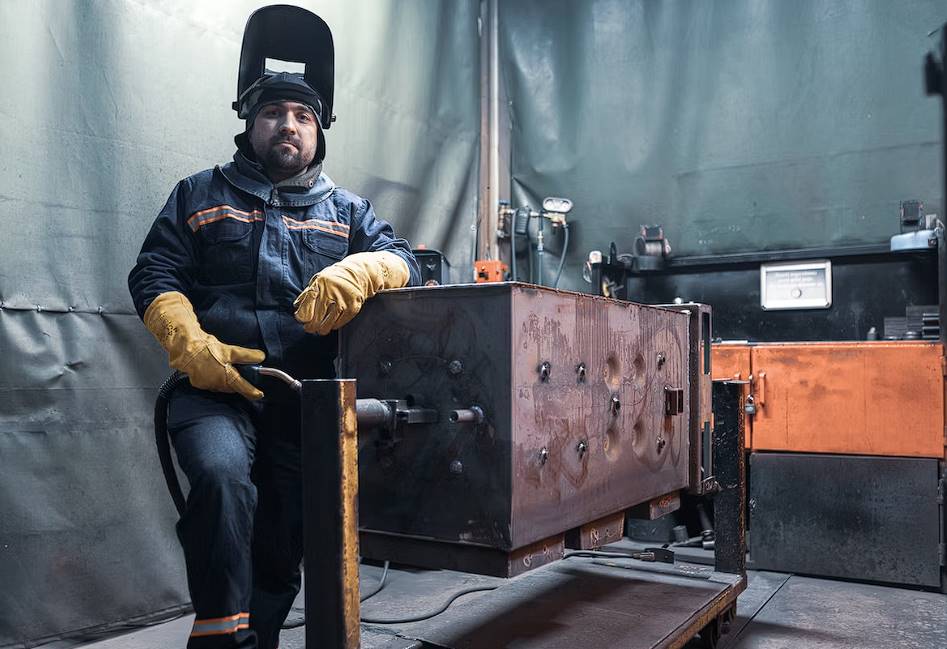
Quality Control Measures
Rigorous quality control methods throughout the fabrication process are crucial for maintaining high standards and avoiding costly errors. Any alterations from the specified parameters can be found with the help of routine inspections and testing. Recording and documenting processes is essential to keep tabs on the project's progress and ensure uniformity.
By implementing comprehensive quality control systems, fabricators can detect and address issues before they escalate, ensuring that the final product meets all requirements.
Measuring And Marking Correctly
Measuring and marking metal accurately are cornerstones of the fabrication process. Use accurate measuring tools like squares, callipers, and rulers to ensure proper component alignment and fit.
Checking all measures twice before starting production might help eliminate mistakes. In addition, identifying where cuts, bends, and welds are to be made provides clear instructions during production, thereby minimising room for ambiguity and mistakes.
Conclusion
Cutting, shaping, and assembling various metal components to create the final product is known as metal fabrication. Construction, transportation, aircraft, and industrial production all benefit greatly from its use. Mistakes in metal manufacturing are not uncommon, even for seasoned professionals.
Common blunders in metal fabrication include inappropriate material use, poor design and planning, a lack of communication, assumptions, poor decisions, insufficient storage, inadequate safety measures, poor cutting techniques, incorrect machine maintenance, and scheduling issues. Delays, lower production, and higher repair costs are all possible outcomes of such blunders.
Fabricators can avoid these pitfalls by paying attention to details like material quality, layout, and cleanliness. They should not take on more than they can handle and should not rush through initiatives. In addition, they need to know the properties of the materials they are working with so that they can bend and shape them appropriately.
Metal manufacturing, in sum, is a difficult and complex process that calls for skill and precision. Fabricators can save time and money by avoiding typical blunders by paying close attention to things like material selection, design, planning, open communication, storage, safety, and bending and shaping processes. Fixing these problems is essential for metal fabricators who want to keep their projects on track and their workplaces safe and productive. Use the right bending equipment, follow lending guidelines, and stay away from unrealistic ideas to guarantee the success of your metal manufacturing job. Realistic plans frequently cause needless waste of materials and flimsy building. If you want to know if your design will work in practice, you can either ask other fabricators for their thoughts or make a prototype.
When working with metal, mistakes can cost you time and money. You may prevent these pitfalls by using a trusted fabricator, adhering to lending standards, and operating with the proper bending equipment.
Be cautious when striking the arc, as doing so incorrectly can harm the metal by heating the filler. It would be wise to double-check all measurements and markings before production begins to avoid costly mistakes.
For a metal fabrication business to thrive, it is essential to invest in its employees' professional development. Employees can be kept up-to-date on the most recent fabrication techniques, technical advances, and safety measures if continuous training is encouraged. By fostering an environment of continuous growth and development, employers may boost employee morale and commitment.
Prioritising safety, testing and researching materials, planning and designing effectively, and implementing quality control methods throughout the fabrication process are all essential to avoiding mistakes in metal fabrication. Mark and measure metal with precision using squares, callipers, and rulers to guarantee perfect assembly.
A successful and fulfilling project requires competent metal manufacturing practises, safety, and training. Metal fabrication businesses may produce high-quality goods that satisfy customers by prioritising safety, performing extensive material testing and research, carefully planning and designing, and applying quality control systems.
Content Summary
- Metal fabrication is a crucial process involving cutting, shaping, and assembling metal components for various industries.
- Even experienced fabricators can make common mistakes during metal fabrication.
- Avoid using inappropriate materials without proper knowledge or understanding.
- Choosing low-cost materials without understanding their properties can lead to project delays and reduced quality.
- Opting for overly strong materials may hinder shaping and increase effort.
- Insufficient design and planning can lead to issues during fabrication.
- Thorough planning and design are essential to avoid mistakes in metal production.
- Lack of communication with customers can lead to fabrication failures.
- Open communication with clients ensures the final product meets their vision.
- Making assumptions about measurements can lead to significant errors in finished products.
- Fabricators should double-check measurements rather than assuming anything.
- Uninformed decisions regarding measurements can lead to significant fabrication losses.
- Fabricators must adhere strictly to client-provided measurements and specifications.
- Proper storage of raw materials is essential to avoid waste and maintain product quality.
- Inadequate safety measures can lead to accidents and injuries during metal fabrication.
- Fabricators must prioritise safety and provide appropriate protective gear and training.
- Poor cutting techniques result in ragged edges and inaccurate cuts.
- Fabricators should use the correct cutting method and calibrated equipment for clean cuts.
- Incorrect machine maintenance can lead to breakdowns and slowed production.
- Regular maintenance and inspections are vital for keeping fabrication tools in good working order.
- Proper scheduling of fabrication processes is crucial to avoid rushed and low-quality work.
- Fabricators should only take on work that can be completed reasonably.
- Bending and shaping metals requires precision and knowledge of material properties.
- Fabricators must adhere to bending standards and material specifications.
- Unrealistic designs can lead to excess material waste and weak construction.
- Soliciting feedback and creating prototypes can help assess design viability.
- Proper arc striking is essential to avoid damage to metal and wasted resources.
- Fabricators should strike the arc precisely and avoid getting stuck on other materials.
- Accurate measuring and marking are crucial for precise metal fabrication.
- Fabricators should use tools like callipers and rulers to ensure accurate dimensions.
- Poor training for employees can impact the success of a metal fabrication company.
- Investing in employee training and development helps maintain competitiveness and improve productivity.
- Emphasise safety in the fabrication workshop to prevent accidents and injuries.
- Material testing and research are essential before starting any fabrication project.
- Thorough research helps ensure the use of appropriate materials for the project.
- Careful planning and design are crucial for successful metal fabrication projects.
- Close coordination with designers and engineers enhances communication and decision-making.
- Quality control measures are essential for maintaining high standards and avoiding errors.
- Routine inspections and testing help identify and address issues during fabrication.
- Accurate measuring and marking are fundamental for proper component alignment.
- Checking measurements twice before production reduces mistakes.
- Providing clear instructions for cuts, bends, and welds minimises ambiguity and errors.
- Employing comprehensive quality control systems ensures the final product meets all requirements.
- Avoiding improper material use prevents project delays and reduced quality.
- Open communication with customers builds trust and loyalty.
- Fabricators must avoid making assumptions about measurements and specifications.
- Adequate employee training improves productivity and customer satisfaction.
- Proper scheduling helps ensure quality work and avoids rushed projects.
- Thorough material testing mitigates the risk of using substandard materials.
- Emphasizing safety in the workplace creates a healthier and accident-free environment.
Frequently Asked Questions
While you can technically use various metals for fabrication, some materials offer better properties and performance for specific applications. It's crucial to perform a material selection analysis and consult experts to choose the most suitable metal for your project.
Safety should be a top priority in any metal fabrication facility. Provide proper safety equipment, conduct regular safety training, enforce safety guidelines, and establish a safety culture among your team.
To achieve high-quality welds in metal fabrication, it is essential to employ skilled and certified welders. Proper heat settings and thorough cleaning of metal surfaces before welding contributes to strong and durable weld joints. Regular inspection of welds for defects ensures the structural integrity of the final product.
To reduce material waste in metal fabrication, optimise material cutting techniques, recycle scrap metals whenever feasible, and adopt efficient material handling practices. These measures contribute to cost savings and promote sustainability and eco-friendly operations.
When facing challenges, communicate openly with your team, evaluate the problem, and develop effective solutions. Feel free to seek expert guidance or make necessary adjustments to ensure project success.

